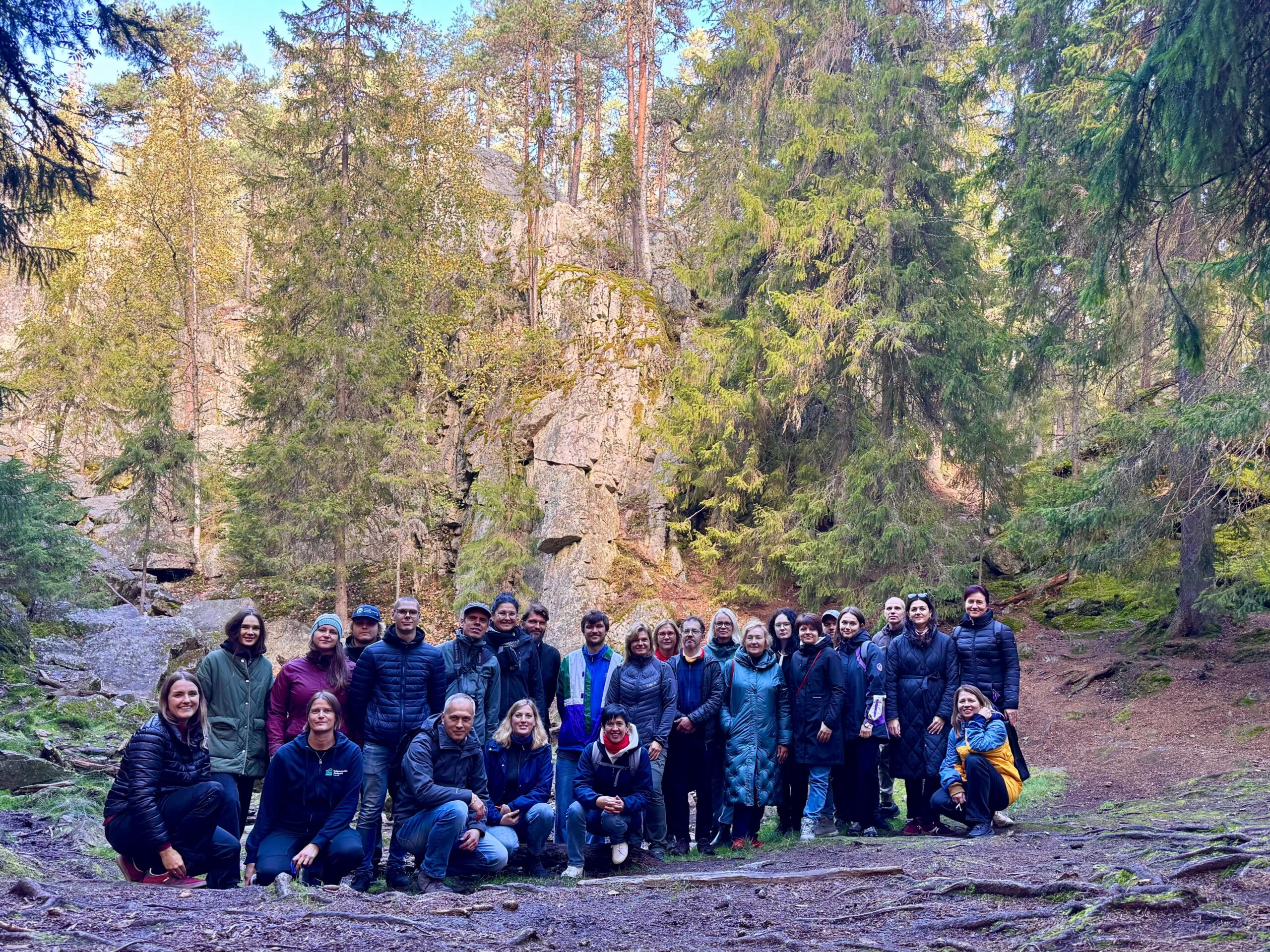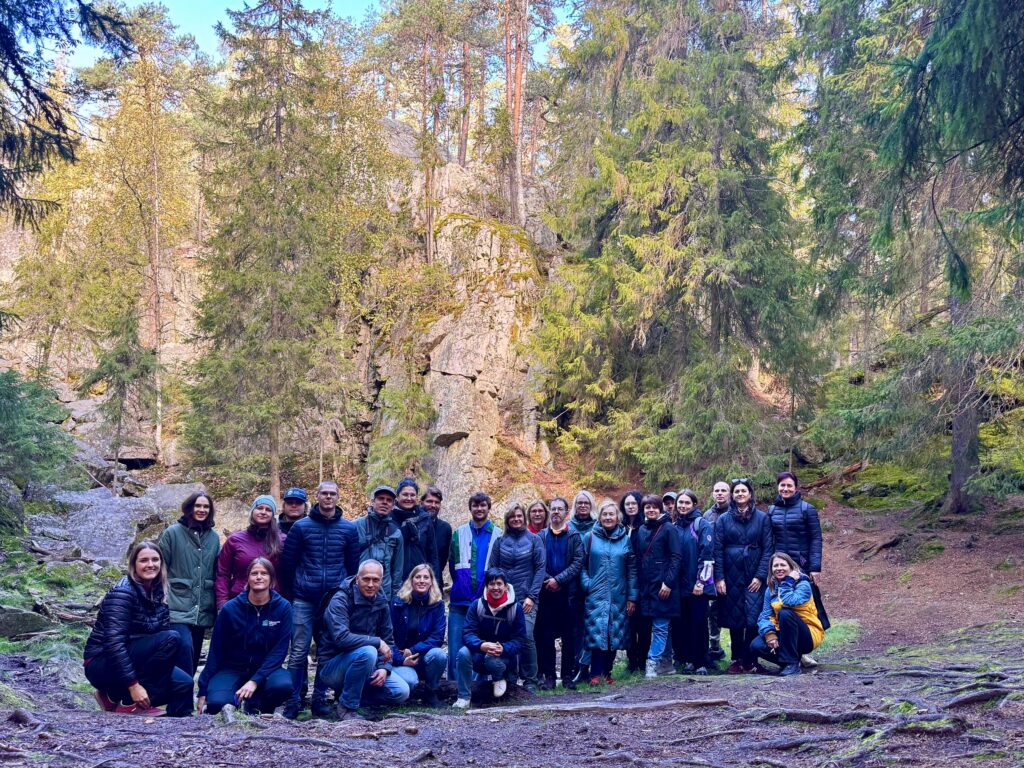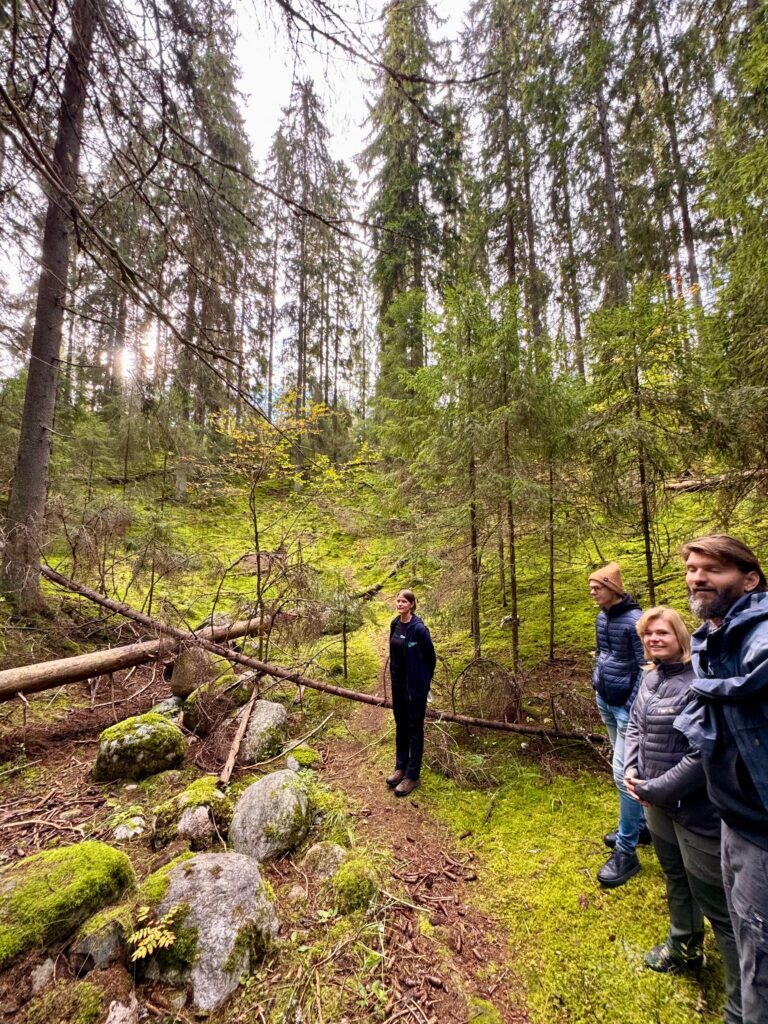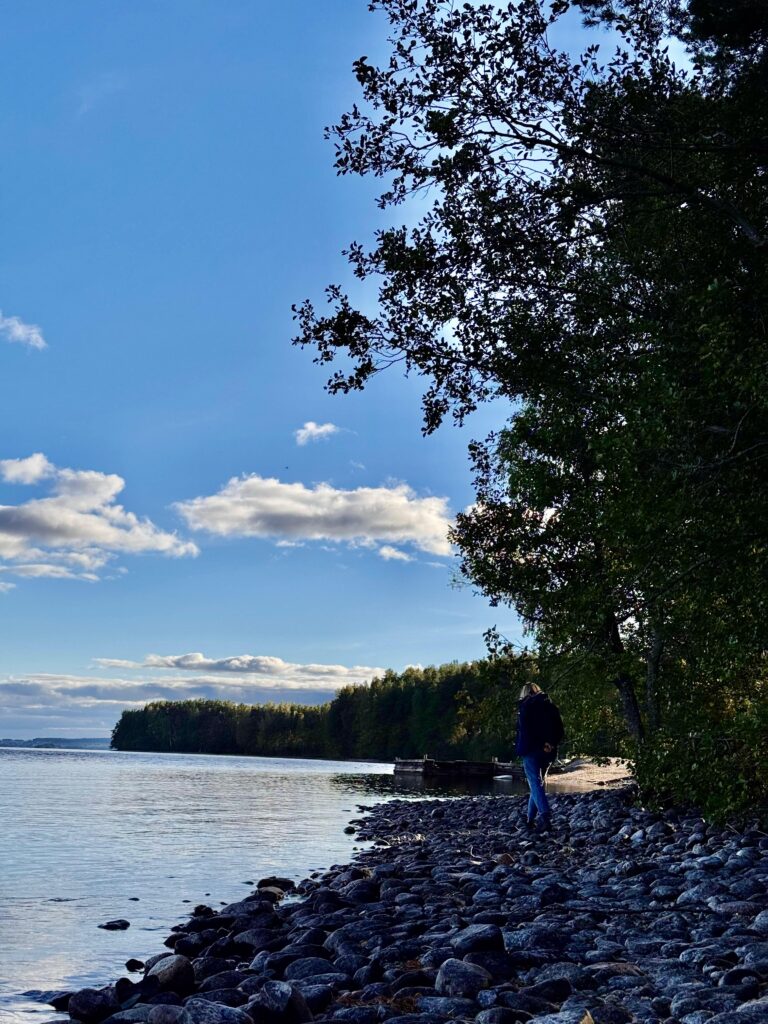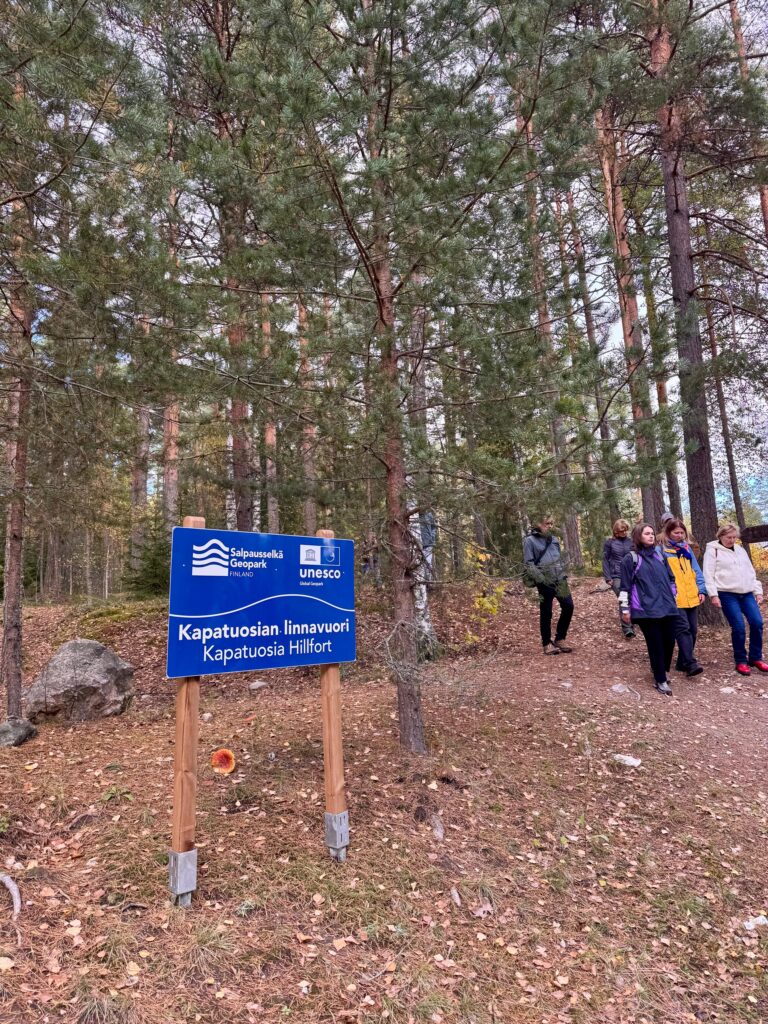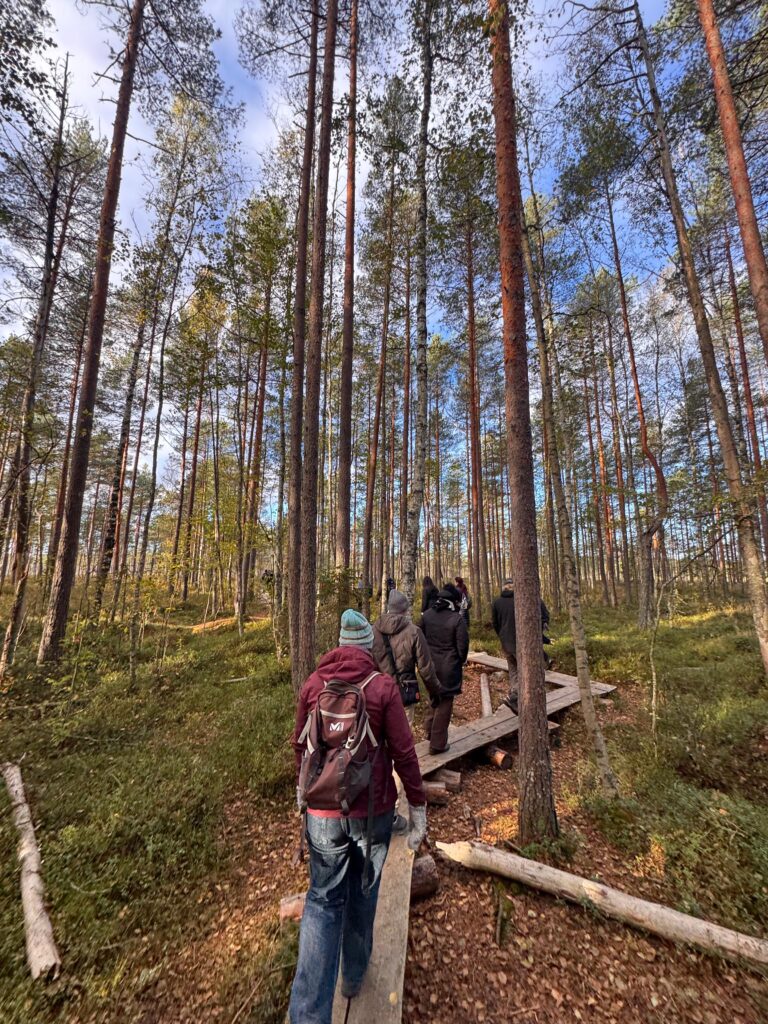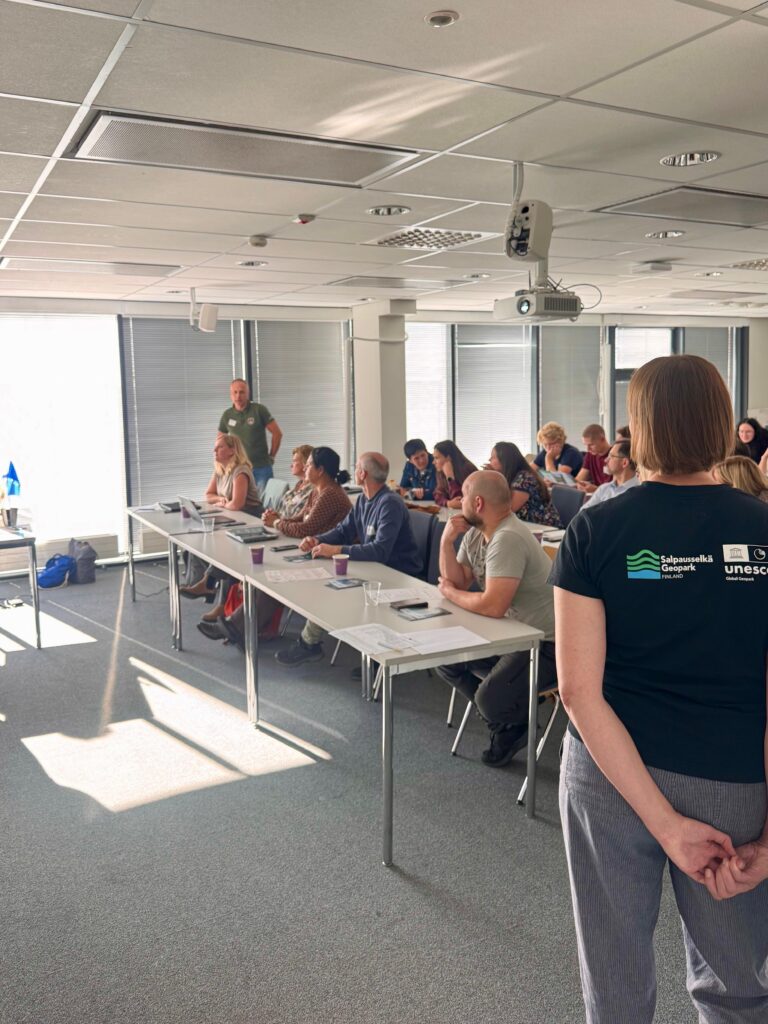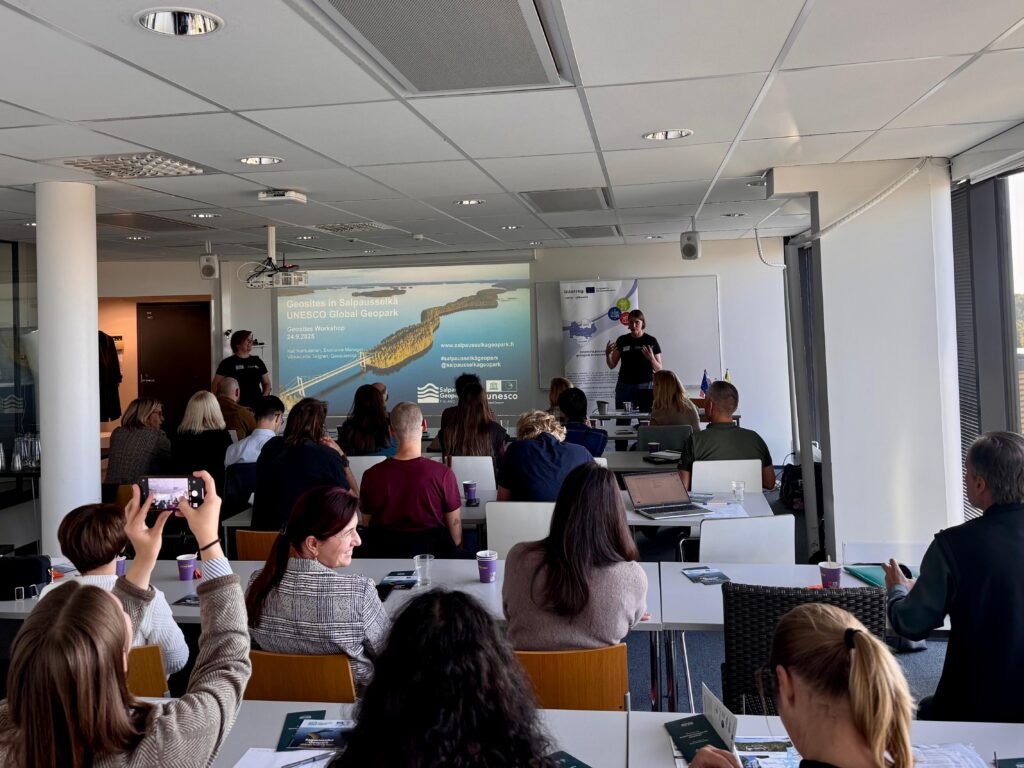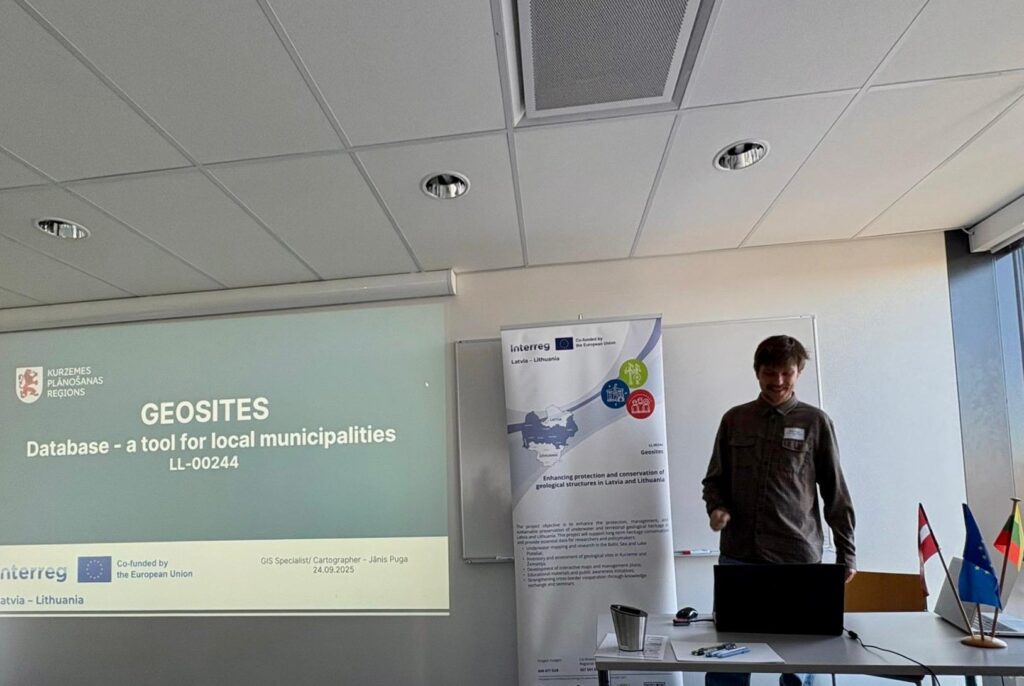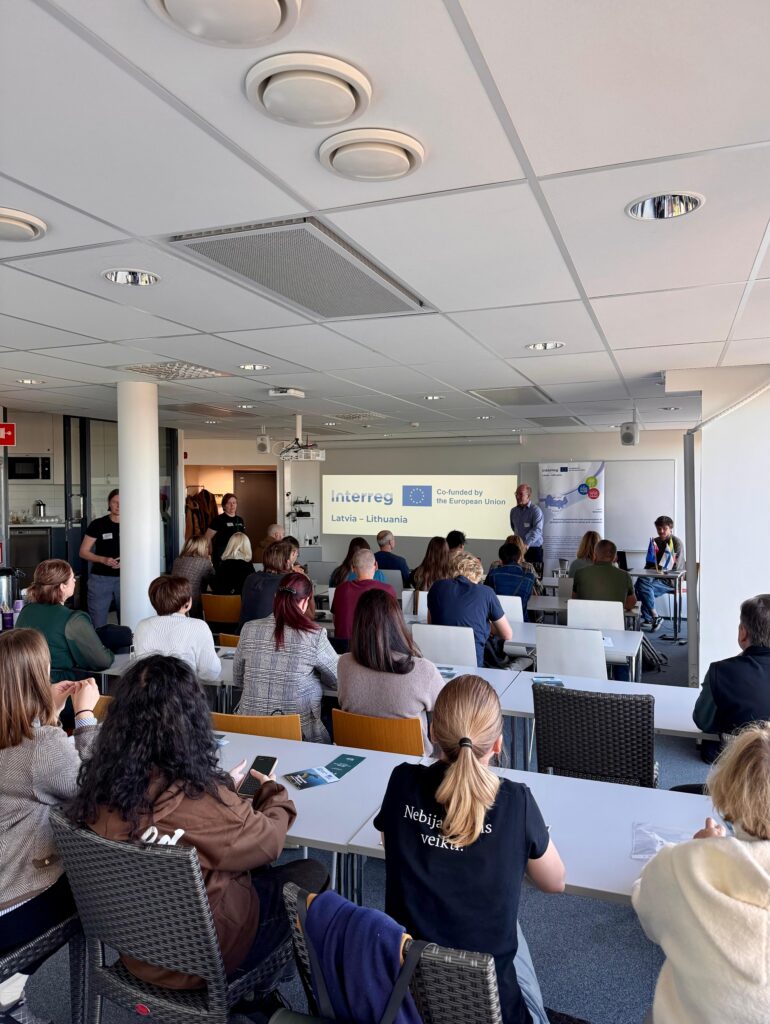From 23 to 26 September 2025, representatives from Latvia and Lithuania took part in a study visit to Finland under the project “Enhancing protection and conservation of geological structures in Latvia and Lithuania” (LL-00244, acronym Geosites), implemented within the Latvia–Lithuania Cross-Border Programme. The delegation included municipal spatial planners, landscape architects, development specialists and nature protection experts, as well as representatives of regional authorities and research institutions.
In total 25 participants gathered in the city of Lahti to gain insights into Finland’s experience in geological heritage protection and sustainable management.
A seminar was hosted at the Urban Environment Services of the City of Lahti, where the progress of the Geosites project was presented, together with tools developed for municipalities, such as the geosite database and its application at the local level. Participants were introduced to the classification criteria of geosites, the overview of registered sites, and the experience of the Salpausselkä UNESCO Global Geopark.Finnish experts shared practical examples from Lahti’s Nature Conservation Programme 2025–2030, which foresees the designation of more than 800 hectares of new protected areas. The decision-making process involves both municipal services and the national ELY Centre, with strong emphasis on public involvement. The municipality of Hollola presented its approach, highlighting cooperation with landowners and local communities as the key to balancing conservation with land use.
The example of the Salpausselkä UNESCO Global Geopark was particularly inspiring, demonstrating how geological heritage can become a resource for local development, education, and community engagement, while also ensuring international recognition.
On the third day, participants explored Finnish nature and geology on site, learning how conservation is combined with accessibility for the public. The programme included visits to several remarkable places that illustrated the interaction between natural values and human use:
- Linnaistensuo mire, with its unique habitats and restoration efforts.
- Lahti Sports Centre and the Häränsilmä kettle pond, a naturally formed depression where ski trails and sports infrastructure are harmoniously integrated into the surrounding environment. The ski slopes here follow the natural relief, preserving both the terrain and the pond ecosystem.
- Tiirismaa hill and Pirunpesä (“Devil’s Nest”), impressive geological formations attracting both researchers and visitors.
- Kapatuosia hillfort and Hollolan keskiaikainen kivikirkko (medieval stone church), combining historical and natural heritage.
- Vääksyn kanava in Asikkala, an important waterway with cultural and historical value.
- Pulkkilanharju trail in Päijänne National Park, offering breathtaking views and an example of balanced nature tourism development.
The visit to Finland provided participants with a broad perspective – from theoretical knowledge and municipal case studies to practical examples in nature. The insights gained will contribute to strengthening the protection and sustainable management of geological structures in Latvia and Lithuania, while fostering further cross-border cooperation in safeguarding natural heritage.


